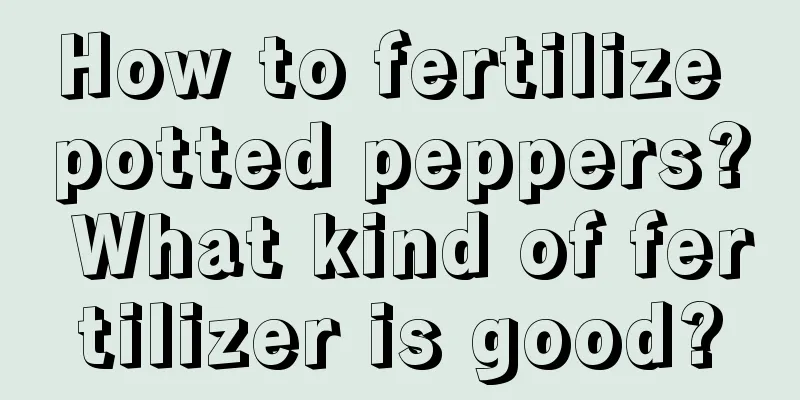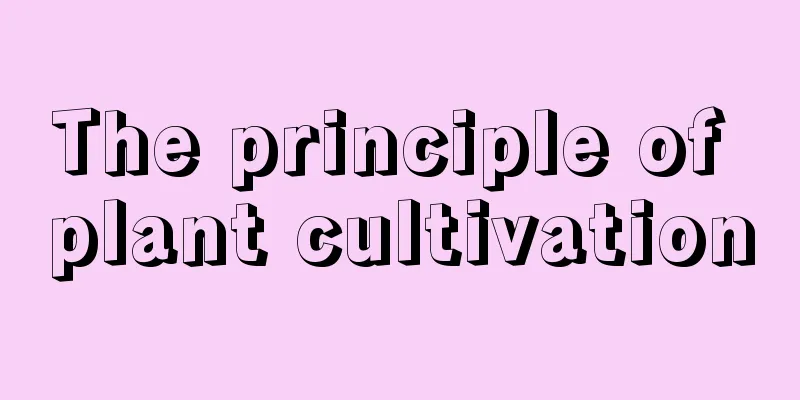How to fertilize potted peppers? What kind of fertilizer is good?

|
Pepper is a familiar vegetable. It can be grown not only in the open field but also in potted plants . Potted peppers need to be fertilized, so how to fertilize potted peppers? What kind of fertilizer is good? Let’s learn more about it below. What fertilizer is good for potted peppers? When planting peppers in pots, try to choose organic fertilizer , which is the best. You can also use dry sheep manure, or homemade bean cake fertilizer. In addition, fermented rice water and crushed eggshells at home can be used to supplement nutrients for peppers. During the flowering period of peppers and after they are picked, fertilizer must be applied, otherwise there will be fewer flowers and fewer fruits. How to fertilize potted peppers? 1. Sufficient base fertilizer When planting peppers in potted plants on the balcony, there must be sufficient base fertilizer, otherwise it will affect the growth of the peppers. Generally, decomposed organic fertilizers, such as chicken manure, cow dung, wood ash, peanut cake and soybean meal, can be placed at the bottom of the pot. 2. Keep up with topdressing Peppers grow very fast, so you can usually fertilize them once every half a month, preferably with well-rotted organic fertilizer. Peppers will continue to bloom and bear fruit, so you need to continue to add fertilizer after picking them. How to manage potted peppers? 1. Watering Peppers have strict requirements for water because they do not like long-term drought, but they also do not like waterlogging. Therefore, if the soil in the pot is dry, it needs to be watered in time, but if the soil in the pot is moist, there is no need to water it again. 2. Lighting Peppers should be placed in a place with sufficient sunlight, and good ventilation is also important, which can reduce the incidence of many diseases and pests. However, during the hottest noons in summer, you can provide it with appropriate shade to prevent the water from evaporating too quickly and affecting flowering and fruiting. 3. Temperature Peppers have strong adaptability and are cold and heat resistant, but they do not grow well when the temperature exceeds 40 degrees, and their growth becomes slow when the temperature is below 8 degrees. After sowing, when the seedlings grow 4 leaves, they can be transplanted into pots. Don't plant too densely. One or two plants in a pot are enough. 4. Pruning After the main stem of the pepper grows taller, side buds will continue to sprout from the bottom. These side buds must be removed as they consume too many nutrients. When the flower blooms, you can remove all the buds at the bottom. That’s it |
<<: How to care for hibiscus and what should be paid attention to
>>: How to grow mimosa? Will it be infected by diseases and pests?
Recommend
The breeding methods and precautions of Guanzhong
1. Matrix selection Guanzhong will grow well in s...
Common pests of Huayuejin and their control methods
Common pests of Huayuejin: scale insects The dama...
How many fish should be raised per acre of water?
In the process of fish farming, it is very import...
How to grow tulips at home
Family farming methods Sowing time It is usually ...
The flower language and legend of Lingjian lotus
The flower language of the euphorbia pulcherrima ...
How to survive the winter of Vitex nigra bonsai
1. Move indoors The Huangjing bonsai should be br...
Don’t keep green ivy or money trees in the living room! How wonderful it is to grow these 3 kinds of flowers, they bloom and grow all over the branches, so festive!
1. Winter Jasmine Spring is coming soon. At this ...
What to do if Desert Rose has a soft stomach
1. Repotting 1. Reason: Its volume is generally n...
Can tree grape seeds be planted?
Can tree grape seeds be planted? The seeds of tre...
Can canna be grown hydroponically?
Can canna be grown hydroponically? Canna can not ...
Hydrangea color adjustment aluminum sulfate and ferrous sulfate (can aluminum sulfate be used for hydrangea for a long time)
When it comes to hydrangeas, many flower lovers w...
The leftover vegetable heads in the kitchen were buried in the soil and eaten one batch after another!
celery Celery can be said to be a must-have in th...
Cultivation methods and precautions of fruit vine
1. Soil Fruit vines need to be grown in fertile s...
How to plant garlic? Steps and time to plant garlic
Garlic is a herbaceous plant of the genus Allium ...
Lilac planting methods and precautions
1. Planting method 1. Choose a pot: Its roots are...









